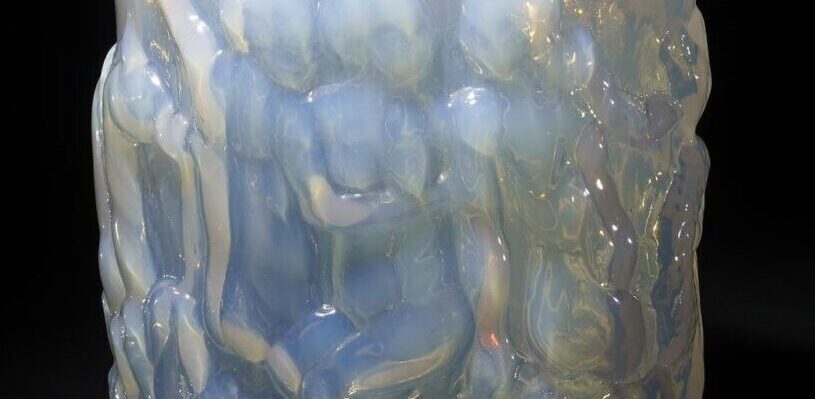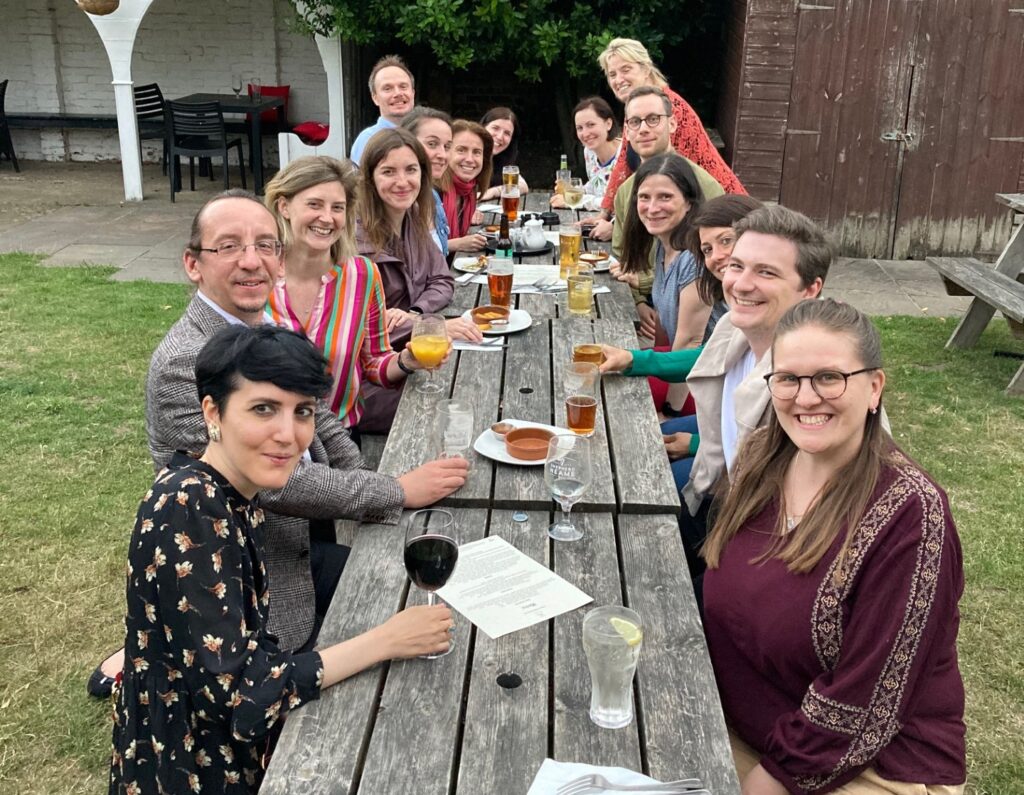
Our international and interdisciplinary conference ‘Connected Central European Worlds, 1500-1700’ took place from 30 June – 1 July 2023 at the University of Kent (Canterbury, UK).
by Elvira Tamus
We heard thirty papers exploring the region from a wide range of perspectives. The conference was opened by our network’s Principal Investigator, Suzanna Ivanič, and Co-Investigator, Tomasz Grusiecki, who emphasised that the event aimed at examining how the complex transcultural nature of Central and Eastern Europe was co-shaped, fostered, and reimagined by artefacts, materials and visual culture, in order to challenge the West-East division that has characterised English-language scholarly literature since the nineteenth century and to investigate how the area fits into global history.
Our keynote speaker, Prof. Thomas DaCosta Kaufmann gave an inspiring talk titled ‘Central Europe Then and Now: Reflections on a Career’, in which he recalled his experiences of studying the region throughout the Cold War era. This fascinating exploration prompted a number of questions regarding the ways in which research on the history and art history of the Central European region can be made better known and recognised among scholars working on other geographical parts of Europe and the world.
The first day of the event started with a session on Geographies, chaired by Luca Scholz. Robyn Radway demonstrated how early modern cartographic prints were hand coloured revealing unique imaginings of borders in the region and raising questions about the place of such under-examined artists in conceptualising geography in the period. Yuliia Koniva examined the tangled and changing frontiers and routes in eighteenth-century Sloboda Ukraine. Jan Jerzy Blonski’s talk focused on the the materiality of Polish-Lithuanian taverns in the light of foreign travelogues and local inventories. Kata Tóth shed light on sheep grazing rights and practices in early modern Southern and Eastern Carpathians as a window onto relationships between neighbouring communities in the region. The papers raised the question of the dominance of ‘western’ lenses in visualizing the region.
Session 2 consisted of three papers analysing Objects and Artists on the Move. Franciszek Skibiński addressed the flow of people along the route from Saxony and Silesia to Greater Poland and the Baltic Sea and its cultural and artistic significance. The route was a major structural part of the economy. Jeffrey Taylor’s paper dealt with the Transylvanian Carpet as vehicle of commerce, diplomacy, and religious identity in the early modern Eastern Mediterranean. Grażyna Jurkowlaniec discussed the actual and legendary journeys of images and wandering motifs in hagiography. The panel underlined three distinct routes and communities of artistic production.
In the third session, we were invited to ‘rethink biography’. Iuliana Dumitrașcu investigated the multicultural legacy of Neagoe Basarab, a Wallachian prince in the early sixteenth century. Konrad Morawski presented his research on Jan Bonawentura Krasiński, focusing on microhistory and patterns of art patronage in Central Europe. Mariana Levytska looked at John III Sobieski’s collection in Zhovkva/Żółkiew Residence as a type of cultural transfer.
Session 4 was dedicated to Prague and Print, and opened by Olenka Horbatsch, who analysed the prized status of prints at the court of Rudolf II and queried the role of prints in the emperor’s collection. Mona Garloff looked at foreign booksellers and their books on offer in late seventeenth-century Prague identifying particular relationships with Nuremberg, Leipzig and Frankfurt. Anna-Marie Pípalová examined the ways in which the Bohemian scholar Bohuslav Balbín visually depicted his theory of history as an arduous and challenging task in the frontispiece to his work Epitome rerum Bohemicarum.
The second day of the conference started off with a session on Deconstructing Heritage. Robert Maniura reflected on the vexed position of the pre-modern visual arts in Kosovo, concentrating on the fate of the Serbian royal foundations, and asking what role art history has in understanding how churches are still under armed guard in Kosovo today. Carolyn Guile explored the historiography and current state of research on early modern wooden vernacular architectures of the historical Polish-Lithuanian Commonwealth. Oleksii Sokyrko investigated ephemeral heritage – sea products, cuttlefish in particular, delivered to the tables of the Cossack nobility by Greek and Turkish merchants.
Then we turned to Healing and Materiality. Joanna Sikorska gave us insight into the role of early Polish herbals from scientific ambitions to visual attractiveness, showing how engaged Polish authors and printers were in the latest knowledge production on natural philosophy. We learned from Aleksander Musiał about the use of emblematic and caricatural imagery in the 1737 Psychrolusia renovate, the work of Siegmund Hahn, one of founding figures of modern German balneology. Jewish magic and everyday objects in early modern East-Central Europe were examined by Agata Paluch, revealing the networks of knowledge represented by the region’s Jewish communities.
We continued with Session 7: Stylistic Conversions and Interconfessional Encounters. Early modern silver bowls from the collection of the National Museum of Serbia and the stylistic convergences in their ornamentation were highlighted by Ivana Lemcool, who had conducted research with Branka Ivanić. Michał Wardzyński’s talk identified and compared the recipes of stucco marbling used by seventeenth-century Swiss-Italian Carloni and Fontana workshops. By addressing the mobility of artists and artisans, Małgorzata Łazicka examined Crispin Scharffenberg’s moving across the boundaries of the Polish Kingdom and Silesia.
In Session 8, we explored Conversion and Interconfessional Encounters. Constanța Burlacu investigated the printing of Orthodox books under Protestant auspices in Romania, while Veronika Čapská analysed Infant Jesus statues as transcultural objects and agents of gift exchange from 1500-1800. Liudmyla Sharipova mapped the travails and travels of the Jewish convert to Eastern Orthodoxy Sister Asklipiodata on her eastward journey from Bohemia to the then autonomous Ukrainian Hetmanate. Stefaniia Demchuk concentrated on the challenges of the Boim Chapel’s Passover iconography and the entangled religious identities in early modern Lviv.
In the final and ninth session of the conference, we learned about Sensory and Material. Maria Grazia Bartolini examined examine the image of Christ’s suffering body in seventeenth-century Ukrainian texts centred on the Passion. Andrew Biedermann discussed why Elector Augustus of Saxony became fixated by the objects of manual labour and give finer definition to the terms ‘tool’ and ‘instrument’ as well as their corresponding cultures of work. Zuzanna Sarnecka concluded this session with her analysis of sixteenth- and early seventeenth-century ceramics produced in Moravia from a multisensory perspective.
In her closing remarks, Olenka Pevny emphasised the great community this research network has created, the needs to embrace our troubled past and to reform Slavonic languages departments, as well as the importance of advancing new methodologies and new questions to position Central and Eastern Europe at the centre of scholarly discussions.
We believe that this conference, rich in novel ideas, methodological approaches, and source analysis, represents an important step towards the creation of new avenues and promising initiatives, and ultimately, to the revitalisation of the field.

New friends enjoying a well-earned post conference drink.